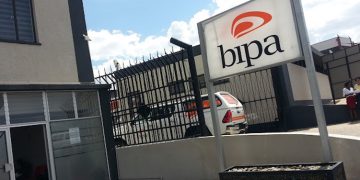
Namibia’s inflation could reach a high of 10.4% in 2022 if Brent crude prices increase to more than US$140 per barrel due to the Russia-Ukraine conflict and the average Rand exchange rate weakens beyond R15.30 against the US dollar, Simonis Storm has warned.
There are indications that Russia’s war in Ukraine will keep fuel prices elevated for much of the year. Even if the war ends, a Western embargo on Russian energy will likely continue for quite a while. Food prices are also likely to see a jump in next month’s report, as wheat prices have surged 35%, given that Ukraine is a major producer. Plus, there are expectations of continued upward price pressures on rent, housing costs, and prices of many services, as the pandemic eases and demand rebounds.
Simonis Storm economist Theo Klein said while the advisory firm has adjusted its inflation forecast for Namibia up from 4.7% to 6.1% for 2022, things could turn worse in the coming few months.
“We believe this forecast is on the conservative side as we factor in Brent crude at US$140 and an average Rand exchange rate of 15.30 against the US dollar,” he said.
Global forecasts on Brent crude range between US$180 and US$200 per barrel.
“Should oil prices reach these levels, then it is estimated for petrol prices to reach R40 per litre in South Africa, and then potentially N$30 to N$35 per litre in Namibia,” he said.
“This extreme case seems plausible if we observe significant Rand weakness due to rising interest rates in advanced economies, sanctions on Russian oil purchases, insufficient production from alternative OPEC+ member states and threats of nuclear war causing oil traders to fret. We however attach a higher probability to the previous scenario discussed above.”
Klein said Namibia will soon start feeling the effects of price increases from the developed world because of the country’s net importer status.
“It is a matter of time for foreign inflation spill over effects to filter through to countries who have high import requirements such as Namibia. It could be that food inflation from 2021 still has to filter through to emerging markets and Namibia, in addition to mounting price pressure following Ukraine’s invasion,” he said.
“We however believe that food inflation will continue to rise for 2022 in Namibia and remain elevated until mid-2023.”
The Simonis Storm Economist maintained his initial forecast of 125bps increase for the year from the Bank of Namibia.
“About N$7.5 billion in liquidity left Namibia during December 2021 to January 2022 in search of better yields in South Africa when the Namibian repo rate was 25bps lower than South Africa’s repo rate. We therefore believe Bank of Namibia to hike by 25bps more than SARB in 2022 due to an attempt to minimise capital outflows in managing the peg,” he said
The South African Reserve Bank is likely to hike interest rates by a further 25 basis points this week to 4.25% in an attempt to slow inflation, according to economists ‘ expectations.
A forecast by 18 economists, academics, and property specialists, polled for Finder.com’s repo rate forecast report, also finds that SARB’s Monetary Policy Committee is set to increase the repo rate at its Thursday meeting.












